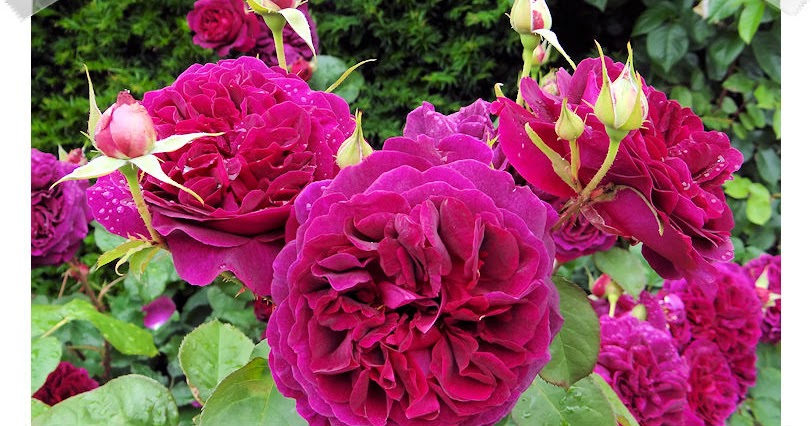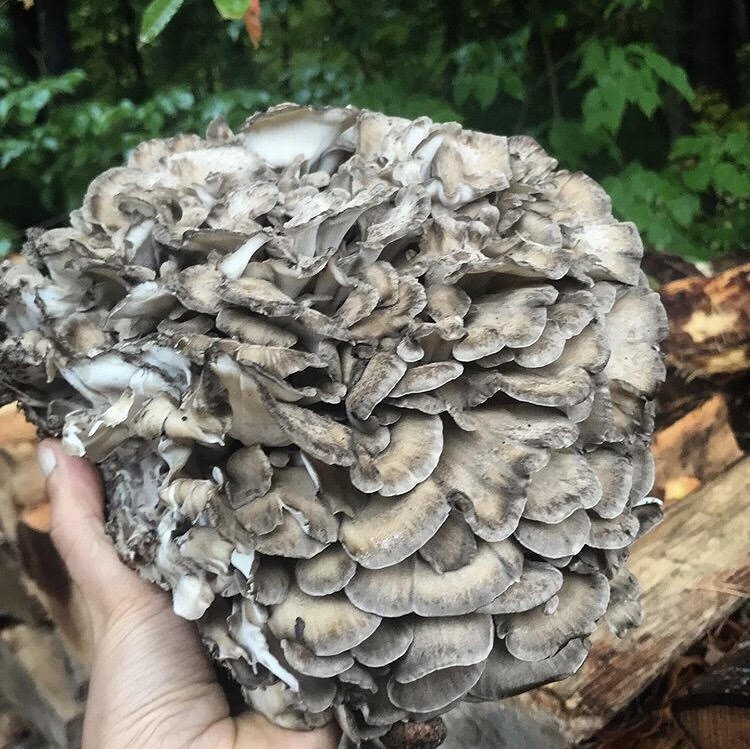William Shakespeare 2000 Rose © Debs Cook
“What’s in a name?
That which we call a rose by any other name would smell as sweet.”
Deeply fragrant joy! This week my William Shakespeare 2000 rose finally arrived from David Austin Roses, I fell in love with this wonderfully fragrant rose last year at Gardeners World, but they had none left to buy at the time. He arrived as a bare rooted rose, so I’ve potted him up and he’ll be planted out when the frosts have all gone. I can’t wait as he’ll be a perfect fragrant candidate for making wine, rose tincture and a variety of other rosy delights, as you can see from the picture above taken at GW last year, he’s a rich velvety crimson, gradually changing to an equally rich purple as he gets older. He has a beautiful strong, warm Old Rose fragrance and also apparently has excellent disease resistance to, he’ll replace Cardinal de Richelieu, as the Cardinal isn’t as fragrant as I was led to believe and he suffers from blackspot!
2009 is a very good year to be adding Shakespeare to my garden; this year the Herb Society annual conference and AGM is to be held in Stratford-Upon-Avon over two days and the theme is Shakespeare’s Herbs. Day two will involve visits to the Shakespeare’s Birthplace garden and Hall Croft home of Shakespeare’s son-in-law John Hall, which I’m looking forward to visiting.
I’ve had a love hate relationship with Shakespeare over the years, when I was 12-14, if asked I’d say I hated him, that was because I had a real pain of an English literature teacher, who force fed us Shakespeare, and made us use a fountain pen for our class and homework and punished us if we didn’t (this was the age of the biro for goodness sake!). His lessons were frankly boring, all I learnt about Shakespeare was I would avoid him when I left school! As I got older I began to appreciate the plays and sonnets, but my passion for Shakespeare lay in the herbs and plants he mentioned in his works. When I went back to rediscover Shakespeare after my school trauma, I was astonished at the number of herbs and plants that turned up in his works, take for example this section from A Midsummer Night’s Dream:
“I know a bank where the wild thyme blows,
Where oslips and the nodding violet grows.
Quite over-canopied with luscious woodbine
With sweet musk-roses with eglantine
There sleeps Titania sometime of the night
Lull’d in these flowers with dances and delight.”Recently I picked up an old book published in 1935 by The Medici Society written by Eleanour Sinclair Rohde entitled “Shakespeare’s Wild Flowers, Fairy Lore, Gardens, Herbs, Gatherers Of Simples & Bee Lore” in which she attempts to identify the plants that Shakespeare wrote about. Her observations are historically interesting although I’m uncertain how accurate the facts as presented by Ms Rodhe’s are. There are several coloured illustrations attributed to Jacques le Moyne de Morgues, a French artist and member of Jean Ribault’s expedition to the New World circa 1562. There are also a number of black and white illustrations from La Clef des Champs (The Key of Fields) from 1586 which is an excessively rare book. The book also includes a chapter with suggestions for making your own Shakespeare Garden and provides a myriad of quotes that you may like to include in the garden. Ms Rohde lists 169 plants in total with their Latin names (as in 1935 some have changed since then), I was pleased to observe that I grew a good number of them in my garden already for example:Balm/Lemon balm Melissa officinalis Antony and Cleopatra 5.2 (although Ms Rhode points out that balm could also have referred to the Balm of Gilead tree (balsamodendron gileadense now Commiphora opobalsamum) which is also called Balsam of Makkah (Mecca).Bay laurel Laurus nobilis King Richard II 2.4Broom Cytisus scoparius A Midsummer Night’s Dream 5.1Burnet Sanguisorba minor King Henry V 5.2Chamomile Chamaemelum nobile King Henry IV, Part I 2.4Carnation Dianthus The Winter’s Tale 4.4Fennel Foeniculum vulgare Hamlet 4.5Gillyvor/Gillyflower Dianthus The Winter’s Tale 4.4Honeysuckle Lonicera periclymenum Much Ado about Nothing 3.1Hyssop Hyssopus officinalis Othello 1.3Lavender Lavendula angustifolia The Winter’s Tale 4.4Marigold/Calendula Calendula officinalis Pericles 4.1Mint Mentha The Winter’s Tale 4/4Myrtle Myrtus communis Anthony & Cleopatra 3.12Parsley Petroselinum crispum Taming of the Shrew 4.4Rose Rosa sp. The Merry Wives of Windsor 3.1Rosemary Salvia rosmarinus syn. Rosmarinus officinalis The Winter’s Tale 4.4Thyme Thymus sp. A Midsummer Nights Dream 2.1Violet Viola odorata King Henry V 4.1I have a couple of books on Shakespeare’s herbs and also John Hall which I’ll be taking with me when I go on holiday to France so I can have a leisurely read and pick up some snippets of information for the conference. I may even scatter a few quotes around the garden, and if I ever get round to labelling all the plants I may add the Shakespearian references. I think I need to look further into the history of gardens, gardening and herbals though. Oh dear I feel another section of my library appearing, Simon will not be impressed if I don’t have a clear out and make some room for adding more books lol!


